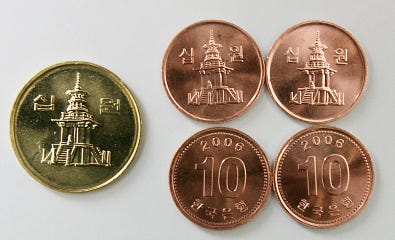The night of January 1, 2024. My kids and I are enjoying our time in Japan at a local izakaya, albeit a little too squished in, average food, and having to deal with less-than-ideal staff. But it’s all good—we’re in Tokyo! After signaling for the check and fumbling a little with the unfamiliar currency, I manage to take out the exact amount—so I thought. This 20-something waitress comes back with this “What the f*** are you trying to pull?” look on her face and yells at me (really).
It turned out that instead of the 50-yen coin (shown on the left above), I had given her the 5-yen coin (shown on the right). My bad, of course, for not knowing the difference beforehand. But consider this; 1). the two coins are exactly the same size (about the size of a nickel), 2). it was dark, couldn’t see very well, 3). how many coins are there really with holes in the center?
No matter from which angle you see this, this is an honest mistake from an ignorant tourist, right? Evidently, she didn’t think so.
To prevent something like this happening to you, let’s go over the Korean currency, and the people who are on it for some historical perspective. We’ll start from the highest denominated paper money and work down to the lowest denominated coin. The interesting thing about the Korean money is that their sizes are all different. The paper money slightly decreases in size as the face value goes down (ie. 50000 won note is bigger than 10000 won, which in turn is bigger than 5000 won and so on), and same goes for the coins too (500 won coin the biggest and 10 won coin the smallest).
50,000 KRW (~ $37). The woman who graces the front of the largest denominated Korean currency is 신사임당, Shin Sah-im-dang. As is the case with all women during the Joseon Dynasty, her real first name is not known. It’s very hard to explain what Sah-im-dang is, but the easiest way of looking at it is that it’s her formal nickname and/or penname. She was a respected poet, painter, scholar, and a writer in her own right. But in Korean history, she’s remembered mainly for being a model—a pious and dedicated—wife and mother, which is precisely why feminist groups were against the idea of Shin being on this bank note when it was first introduced in 2007.
The orange marker is “Saimdang-ro” in Gangnam area of Seoul, named after her.
10000 KRW (~$7.50). Probably the most frequently used note, featuring the greatest King who ever lived—Sejong, the 4th King of Joseon Dynasty. Good circumstantial evidence seems to point that he is the lone creator of the Korean writing system—hangeul, considered by many world-renowned linguists to be the most perfect writing system there is. (It really is daunting to write about King Sejong’s achievements, but I’ll eventually get to them.)
Also, before I forget, I need to clarify something. I keep saying Korean “paper” money but that would be technically wrong. It’s not paper, it’s made of cotton and other natural fibers—supposedly easier to print security features like holograms on, and something that withstands wear and tear a lot better than paper-based money.
5000 KRW (~$3.75). His name is Yi Yi (이이, 1536~1584), with different Chinese characters, is more often referred to by his formal nickname Yi Yool-gok (이율곡). One of the most well-known scholars of Joseon Dynasty, he is also the son of the abovementioned Shin Sah-im-dang. What a family, huh?
He proposed radical reform in Joseon politics and sought to mitigate the raging factional disputes, and more importantly, he saw rising threat from Japanese warlords at the time and called for military build-up of 100,000 troops, which turned out to be prophetic, for Japan invaded Joseon 8 years after Yi’s death. Joseon, mired in factional selfishness and inept King at the time, was ransacked by the Japanese, and that invasion is still (almost 500 years later) regarded as the most devastating to the Korean psyche.
This is “Yulgok-ro” in downtown Seoul.
1000 KRW (~75 cents USD). You should always have some of these 1000 won note for the frequent trips to the convenience stores and for public transportation fares. Bus drivers hate it if you hand over anything bigger than this, that’s if they accept cash in the first place.
And the man on the note is Yi Hwang (이황, 1502~1570), or Yi Twae-gyeh (이퇴계, formal nickname again and very hard to pronounce for non-Koreans). There is just no good way of romanizing his 퇴계 nickname, but he, along with the aforementioned Yi Yi, is the leading scholar of Joseon in neo-Confucianism (성리학). Both Yi’s lived during the same time period and Yi Hwang was a big influence on Yi Yi.
And there is “Toegye-ro” in his honor.
500 KRW coin (~38 cents USD). Very handy in many situations.
100 KRW coin (~7.5 cents USD). The face shown here is Admiral Yi Sun-shin (이순신), probably the greatest military (naval) leader of entire Korean history. He single-handedly destroyed most of the Japanese naval ships during the Japanese invasion of 1592 and is credited with leading Joseon to the ultimate victory (if you can call it that) despite all the jealous detractors in the central Joseon court. King Sejong and Adm. Yi are absolutely revered by all Koreans, even the North. He was posthumously bestowed the title Lord Choong-moo (충무공), a moniker reserved only for those who “saves the nation.” And of course, there is…
“Chungmu-ro” in his honor. And at the heart of Seoul…
…on the main boulevard that leads directly to the front of the Gyongbokgung Palace, there stands the two giants of Korean history. 1, Adm. Yi as a symbol of protecting the royal court of Joseon, and 2, of course King Sejong in his stupendous presence.

50 KRW (~3.8 cents USD). Almost exact same size as the Japanese 50 and 5 yen coin.
10 KRW (less than a penny’s worth). It used to look like the left gold colored coin, but new ones closely resemble how a US penny looks like. It is still circulated but it serves no real purpose.
There is also the 5 KRW and 1 KRW coins but those have been discontinued and put out of service.




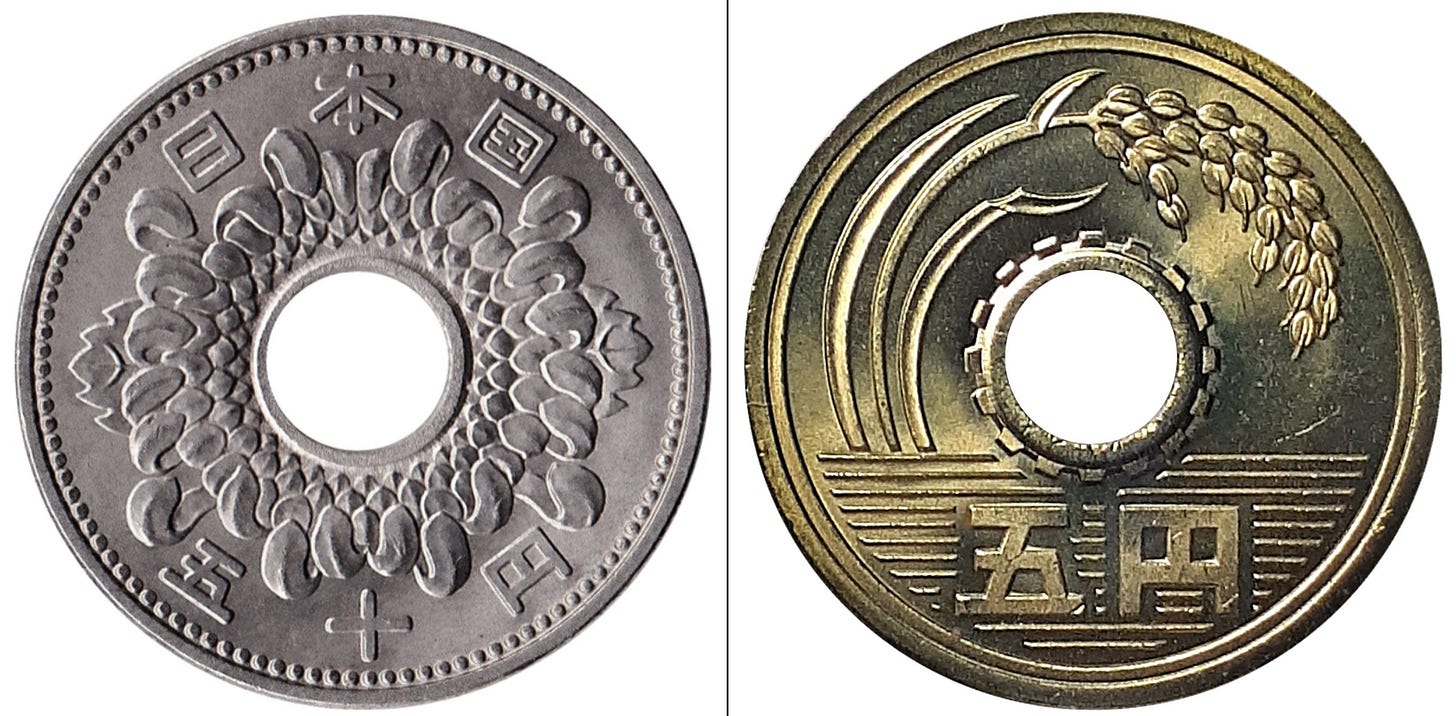



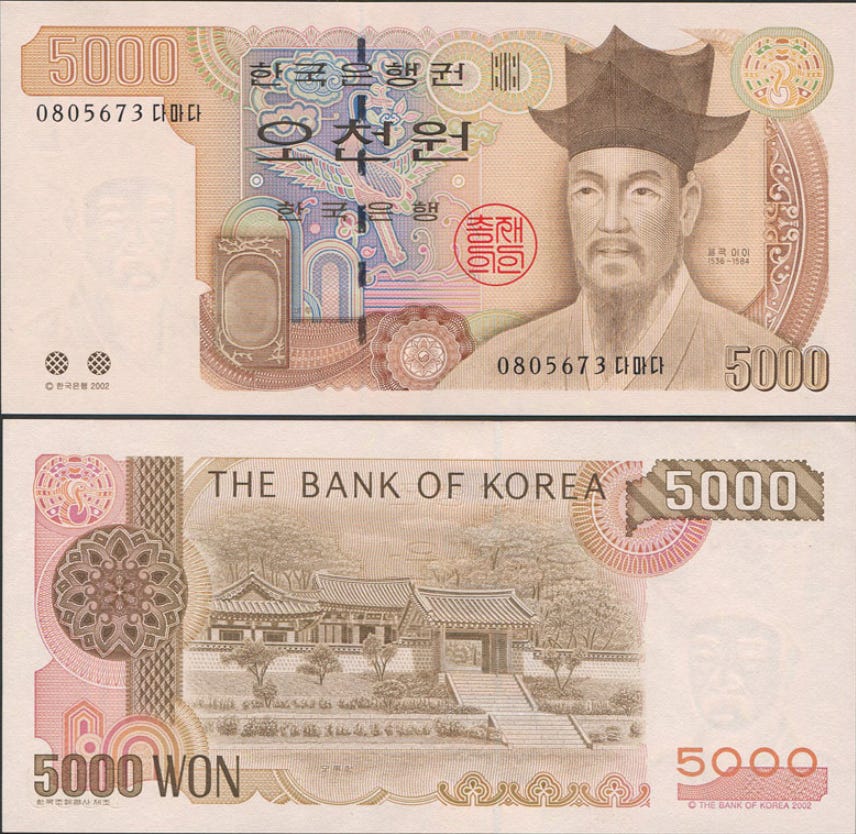



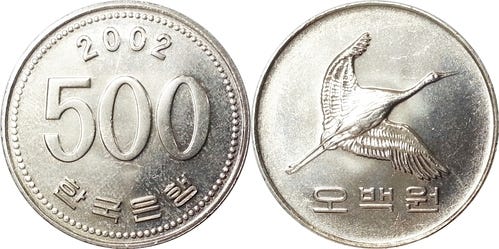



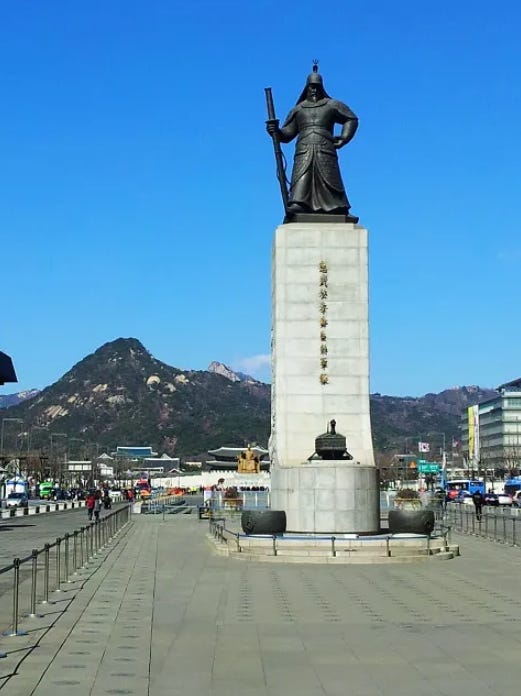
![금천저널24] 50원 동전은 돈이 아닌가요? 금천저널24] 50원 동전은 돈이 아닌가요?](https://substackcdn.com/image/fetch/$s_!WKKk!,w_1456,c_limit,f_auto,q_auto:good,fl_progressive:steep/https%3A%2F%2Fsubstack-post-media.s3.amazonaws.com%2Fpublic%2Fimages%2Fab12c1b2-92b3-4ed3-acaa-2f905f8734f3_302x167.jpeg)
